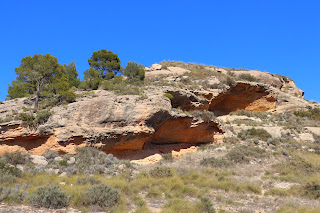I was thoroughly disgusted when the explanation for Flag Fen, the Bronze age site just outside Peterborough, changed from being a series of person made islands, with an economic and defensive function, to being a site of religious significance. Archaeologists say that a site has religious significance when they have no idea. "Look at the way it's constructed with everything facing the one open space - it must be a religious site." "And what does this writing say" -White Hart Lane - obviously a place of worship" (Yes Jim, I know they've pulled it down). Religion, the last refuge of a scoundrel to misquote Samuel Johnson.
I met a bloke who abandoned his work on Navajo burial sites to hitch across the United States, to work his passage on a boat across the Atlantic to dig at Flag Fen when it was first discovered. I bet he's scandalised by the change in emphasis too.
I heard, ages ago, on a TV documentary that the important thing about Stonehenge is not whether it's a calendar or a temple or a spaceship landing pad but that it's there. The point being that a couple of blokes and their half wolf dog couldn't build Stonehenge. It required someone with sufficient clout to get a load of people to work together, it required social order and structure. I could see that.
A while ago I went to see the Antonio Banderas film, Altamira, about the cave paintings in Cantabria. Afterwards, I did a bit of Googling. I was really surprised to find that the oldest paintings are now thought to be maybe 36,000 years old and the newest about 13,000 years old. Yet the paintings are the same in style. I wondered why. After all from the time that Flag Fen was built, about 3,500 years ago, or when the Great Pyramid of Giza was finished, about 4,500 years ago, we've gone from tossing bronze swords into a lake, as a gift to the Gods, or popping vital organs into canopic jars, ready for the journey in the afterlife, to the advanced state represented by Facebook and Instagram. Why didn't the Altamira boys and girls progress from finger painting to hyper realism in 20,000+ years? The answer, or at least the best guess, I understand, goes back to the same reason that there is a Stonehenge. In Altamira there weren't enough people, there wasn't enough organisation to pass on the knowledge about painting. So generation after generation had to reinvent it.
In Pinoso, maybe in Culebrón, we've got some petroglyphs, ancient rock carvings done by human hand. The only dating that I've seen on them is Bronze Age, which seems to be defined by technology rather than years, so that it covers a period from maybe 5,000 years ago to a bit over 2,500 years ago. I've gone looking for the petroglyphs on la Centenera Hill several times and I now know where one obvious one is to the extent that it's one of the places that we take visitors. To be honest petroglyphs aren't that exciting. I remember, as a seventeen year old with a new four wheeler driving licence, setting out to Ilkley Moor to find the cup and ring marks. Hmm. Not that overwhelming. Give me Avebury or Castlerigg stone circle any time. Nonetheless the real power of Avebury isn't its size or obviousness, it's the feeling that invades your soul as you stand in West Kennet Avenue - that unbroken line from them to us. The idea of some Bronze Age shepherd or flint worker sitting on a rock a few millennia ago and looking across from la Centenera Hill to where our house in Culebrón as he or she carved lumps out of the limestone rocks is pretty cool too.
By sheer chance I bumped into a blog that showed some of the Centenera petroglyphs, better ones than I've seen. The blog said they were within a couple of hundred metres of the trig point (vértice geodésico). I was pretty sure that I knew where that was and sure enough I did. I didn't find the "good" petroglyphs though. I did find something in the rocks that I'm pretty sure was made by human hand. It's the photo at the top of the blog. What do you think?



